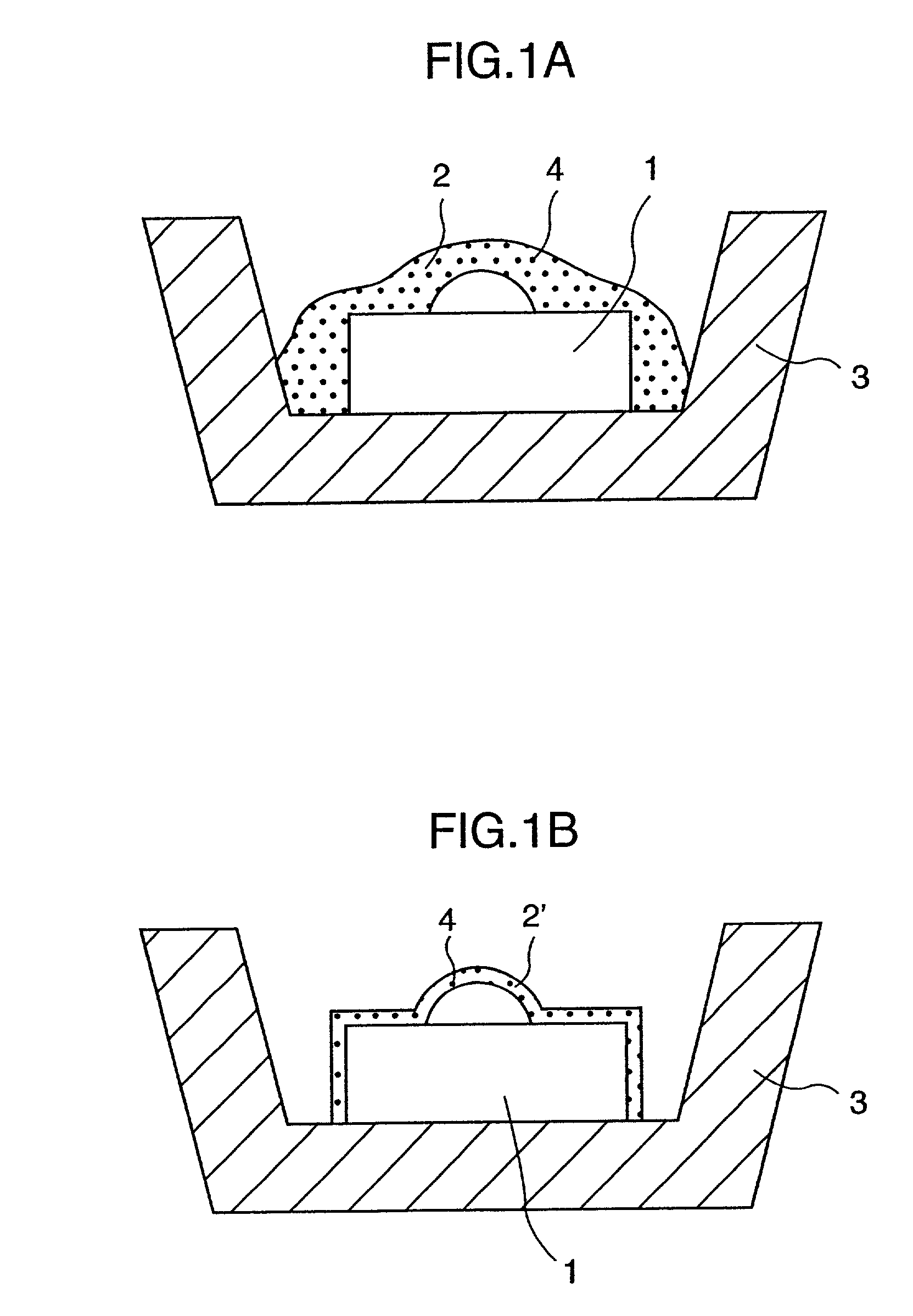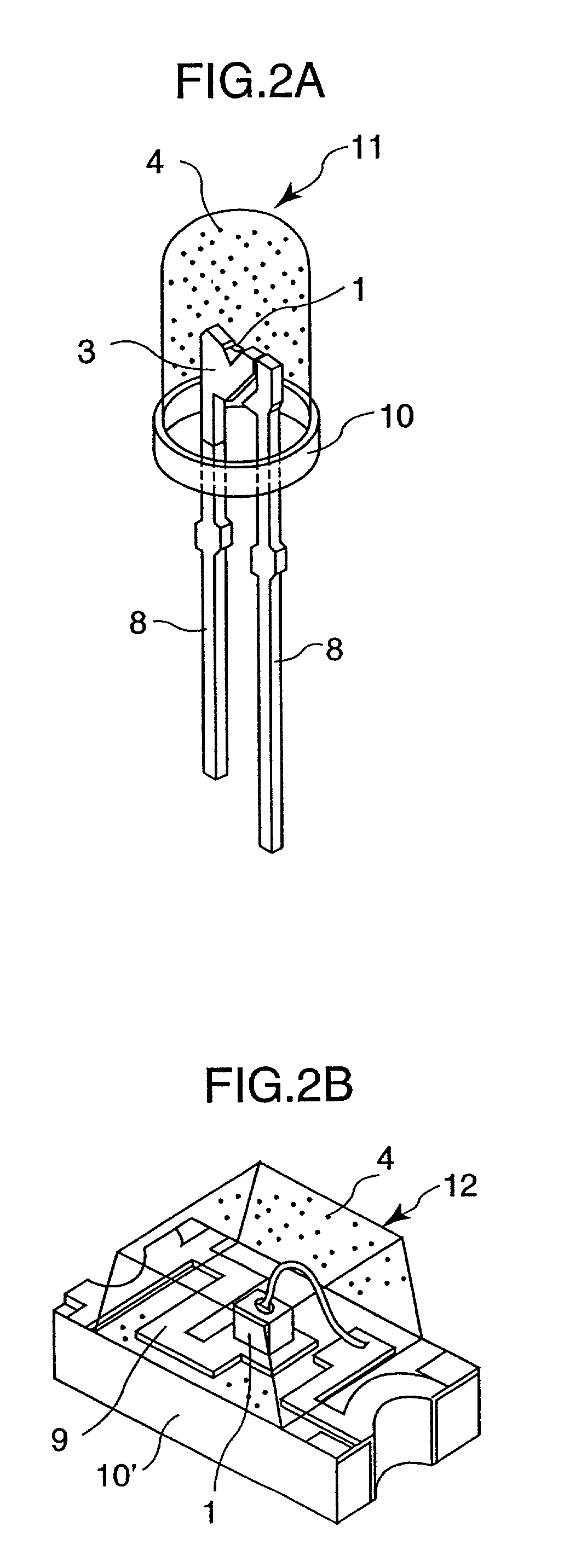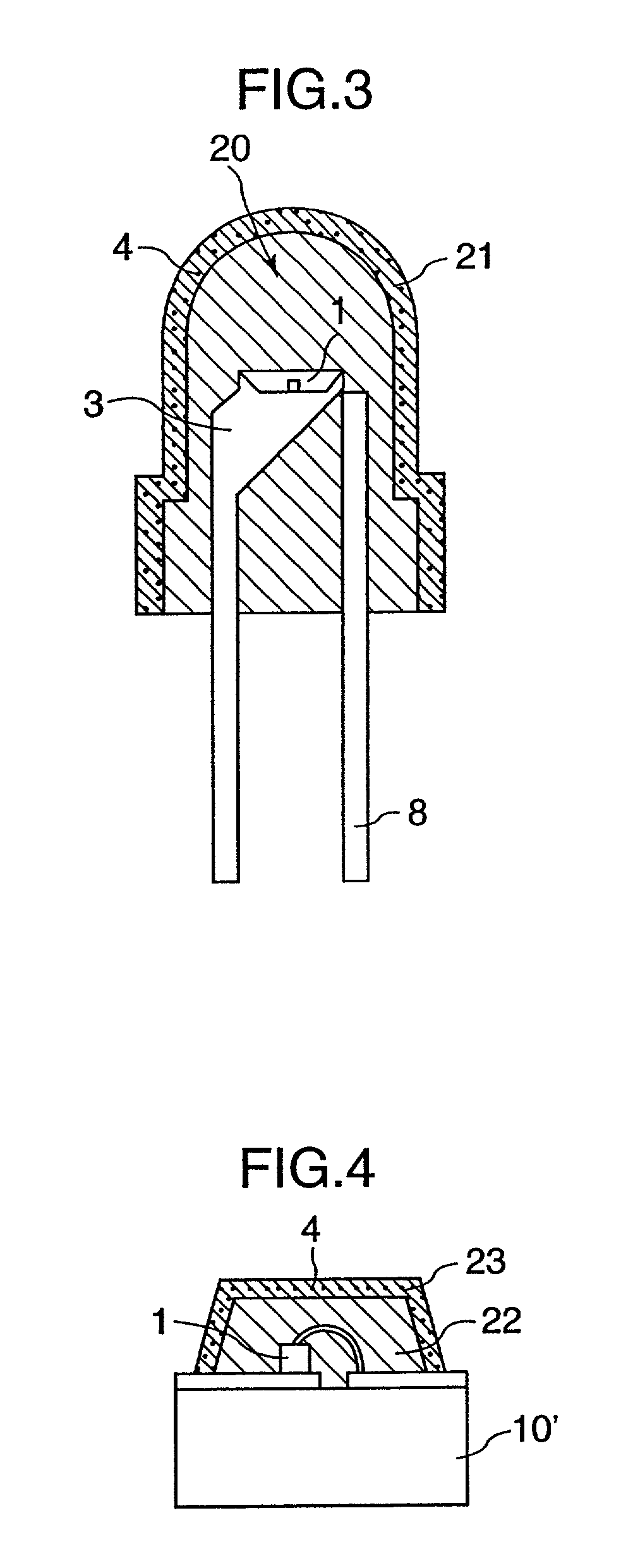Light-emitting diode device
a diode and light-emitting technology, applied in the field of light-emitting diodes, can solve the problems of insufficient red light in the white, large space and higher costs, and inability to achieve the intended color ton
- Summary
- Abstract
- Description
- Claims
- Application Information
AI Technical Summary
Problems solved by technology
Method used
Image
Examples
first embodiment
[0048] the LED device according to the invention is such that the fluorescent substance has a form of a layer placed on an outer surface of the light-emitting element. For example, a fluorescent layer 2 may be formed by coating the outer surface of the light-emitting element 1 with a coating agent containing a phosphor 4 as shown in FIG. 1A or a fluorescent layer 2' may be formed by adhering a film made of a resin composition containing the phosphor 4 to the outer surface of the light-emitting element 1 as shown in FIG. 1B. The light-emitting element 1 having the fluorescent layer 2 (or 2') placed thereon may construct a chip-type LED device by being placed in a cup 3 connected with a lead wire (not shown). The chip-type LED device may be sealed with a transparent resin to provide a sealed-type LED device.
[0049] The coating agent used for forming the fluorescent layer contains the above-mentioned red phosphor, the YAG phosphor if necessary, binder and solvent. The fluorescent layer ...
second embodiment
[0050] the LED device according to the invention is a sealed-type LED such that the light-emitting element is embedded and sealed by a resin containing the red phosphor. One example of the LED device having a cannonball-shape is shown in FIG. 2A. The light-emitting element 1 is placed in the cup 3 connected with a lead frame 8. With this assembly set on a substrate 10 through which the lead frame 8 is insertable, a cannonball-shaped sealed-type LED 11 is formed on the substrate 10 by molding a resin composition containing the red phosphor 4 into a cannonball-shape. The sealed-type LED 11 is formed as to embed the light-emitting element 1 in the fluorescent substance. FIG. 2B shows an example of the LED device having a block-shape. With the light-emitting element 1 placed on a lead wire printed on a substrate 10', a block-shaped sealed-type LED 12 is formed by molding a resin composition containing the red phosphor 4 into a block-shape.
[0051] The resin composition used for sealing th...
third embodiment
[0055] In the present invention, the light-emitting element is sealed with a transparent resin to form a sealed member, and the sealed member is covered with a covering member including the above-mentioned red phosphor. Specifically, as shown in FIG. 3, a sealed member 20 is formed by sealing the light-emitting element 1 placed in the cup 3 connected with the lead frame 8 and is covered with a covering member 21 containing the phosphor 4. FIG. 4 shows a LED device where the sealed member is block-shaped. A covering member 23 used for covering the block-shaped sealed member 22 is formed so as to conform to the shape of the sealed member 22.
[0056] The shape of the sealed member and a terminal connecting method used in the third embodiment are not particularly limited. For example, as shown in FIG. 5, a sealed member 20' having a projecting locking portion 24 may be used, thereby accomplishing a stable mounting a covering member 21' to the sealed member 20'. The covering member 21' inc...
PUM
 Login to View More
Login to View More Abstract
Description
Claims
Application Information
 Login to View More
Login to View More - R&D
- Intellectual Property
- Life Sciences
- Materials
- Tech Scout
- Unparalleled Data Quality
- Higher Quality Content
- 60% Fewer Hallucinations
Browse by: Latest US Patents, China's latest patents, Technical Efficacy Thesaurus, Application Domain, Technology Topic, Popular Technical Reports.
© 2025 PatSnap. All rights reserved.Legal|Privacy policy|Modern Slavery Act Transparency Statement|Sitemap|About US| Contact US: help@patsnap.com



